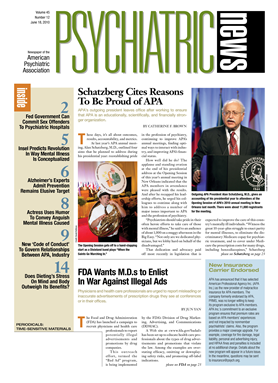Predicting what someone will do next has been the purview of fortune-tellers, linebackers, and sometimes forensic psychiatrists, but give a neuroscientist an MRI machine and he can tell you exactly what a research subject will do seven seconds in the future.
The science is still at an early stage, but the implications for use range from the emergency room to the courtroom, said John-Dylan Haynes, Ph.D., M.Sc., a professor at the Bernstein Center for Computational Neuroscience in Berlin, Germany, at the BioPrediction Conference in Washington, D.C., in May.
Recently, Haynes has been seeking to observe the point at which a subject has made a decision but before he or she is aware of it.
His studies present simple tests that involve a free choice with no emotional content for his subjects. Will they add or subtract two numbers? Will they push the button on the right or the left?
Next, he asks the subjects to remember the letter on the screen when they make their decision. The letters change every half second, serving as timing markers.
By looking backward at the MRI scans from the time the letter appeared on the screen, Haynes and his colleagues can see changes in brain activity that predict the decision up to seven seconds before the subject acts.
Even a first step into an unbiased snapshot of the mind's intentions intrigues people from divergent fields.
Market researchers are already interested in the technology. Police and military interrogators would probably love to have a foolproof lie detector. Ultimately, understanding how the brain makes decisions may lead to technologies permitting direct control of computers by physically disabled people.
Those practical applications are still a while off, despite the claims of some commercial interests to the contrary, said Haynes. While results so far have been interesting, the system has a host of limitations.
Decision making is encoded in fine-grain detail in the brain, said Haynes. “It is hard to generalize from person to person.”
In addition, the visual and temporal resolution are not yet fine enough, other thoughts impose themselves as the desired question is answered, and intersubject differences like age and personality undoubtedly play a role.
And besides, people are not automatons, said Haynes. “What we see is more like a bias than a full-blown decision.”
Maybe they can still change their minds in that seven seconds, but maybe a better machine will spot that, too, before long.
